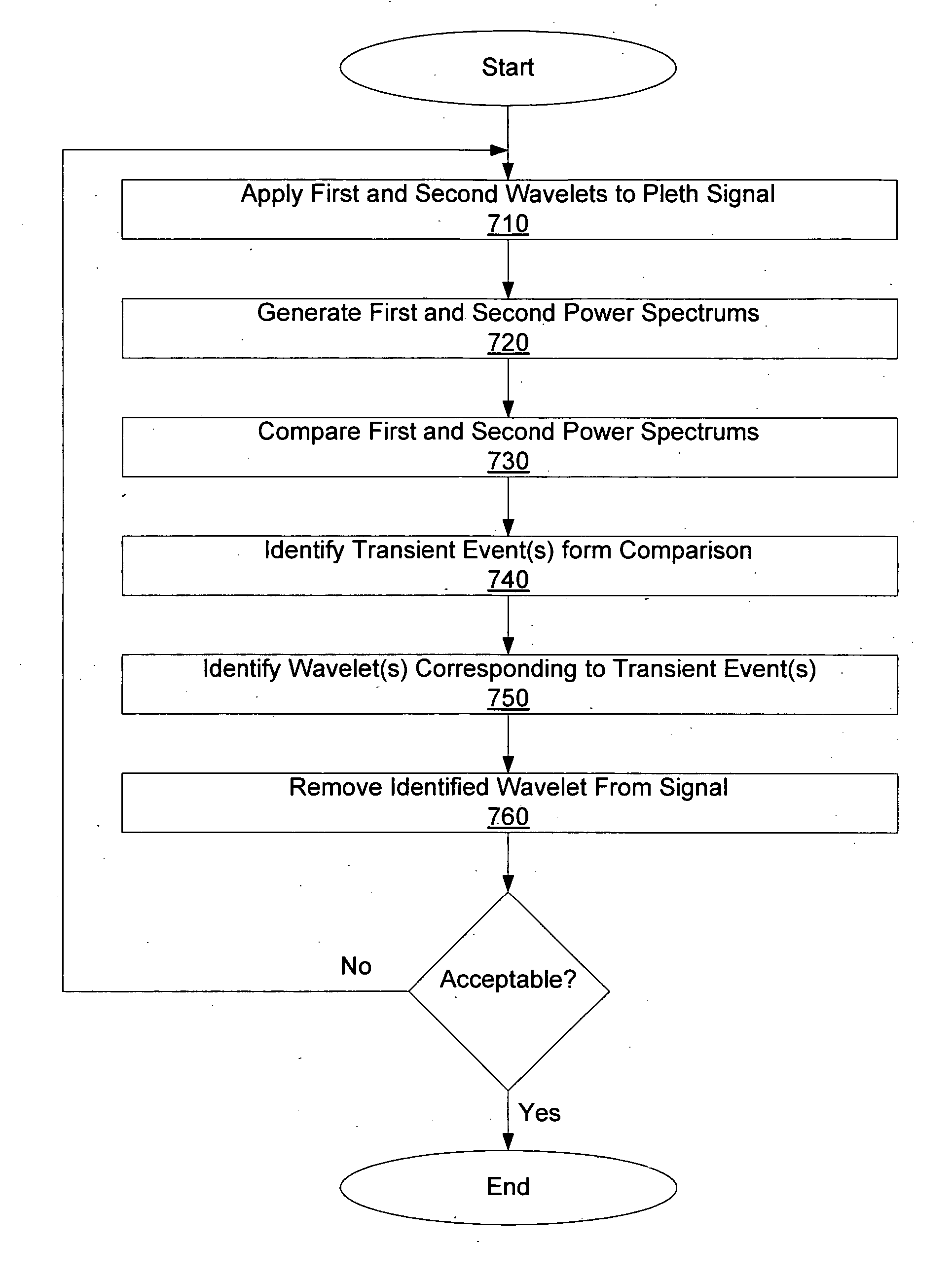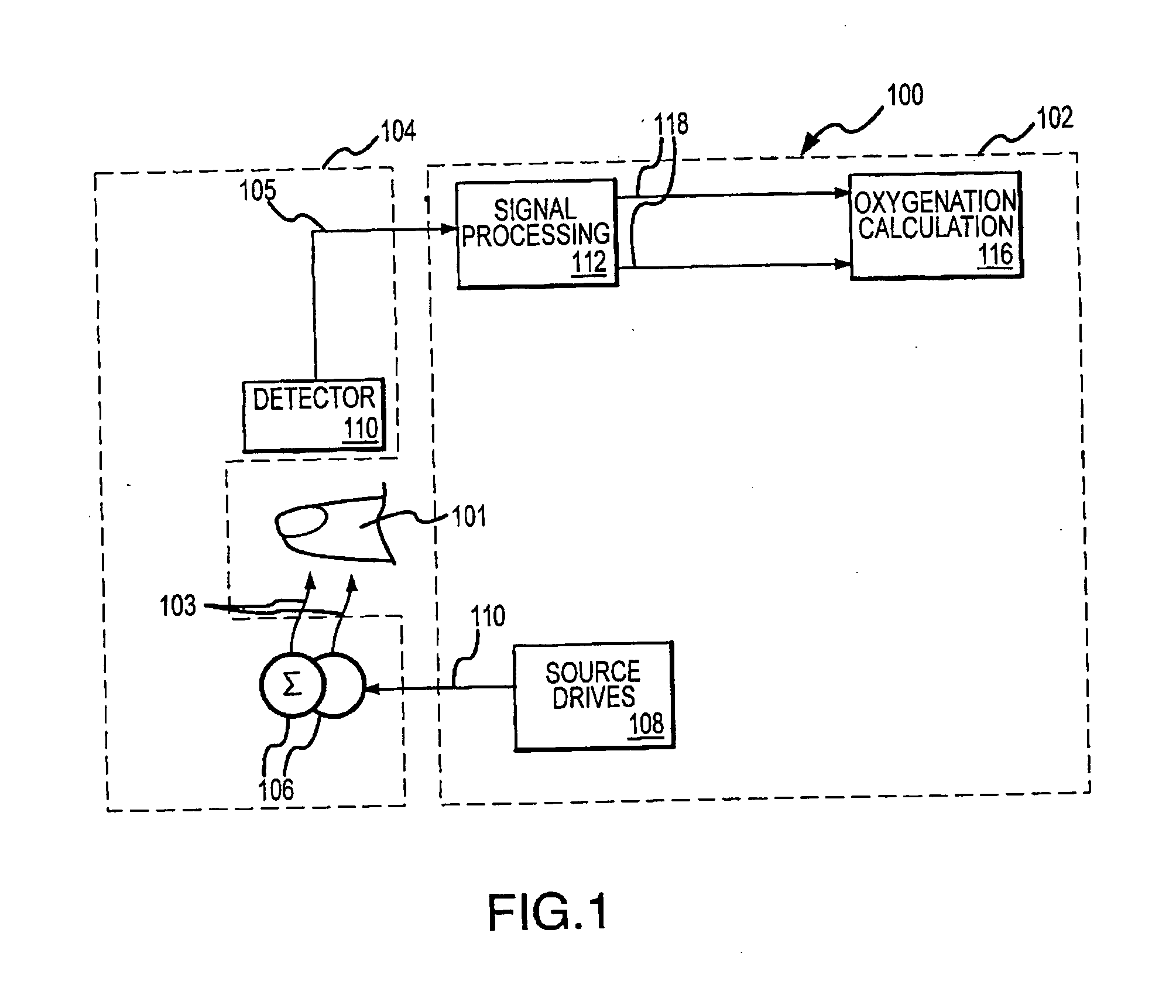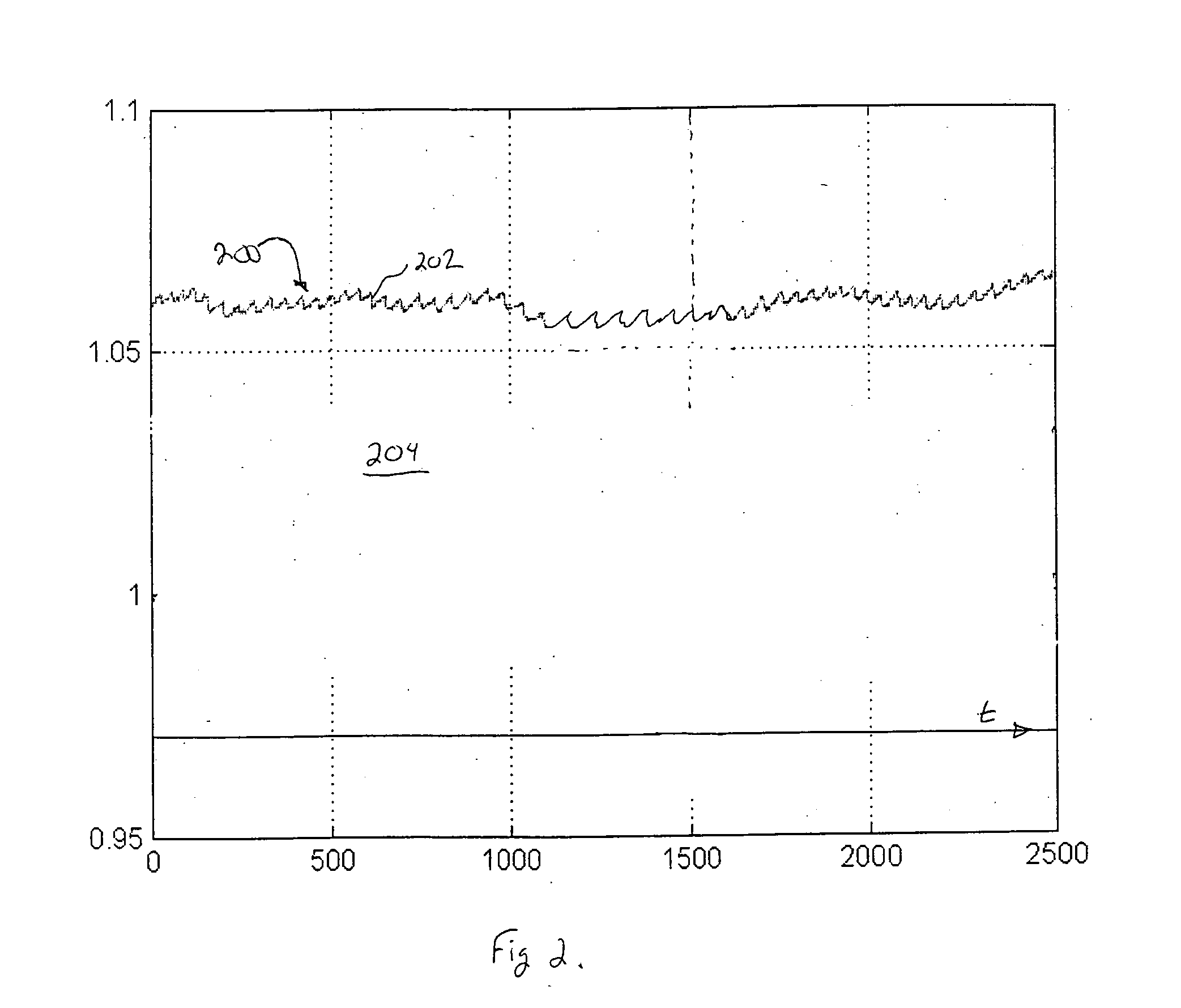Wavelet transform of a plethysmographic signal
a wavelet transform and plethysmographic technology, applied in the field of photoplethysmography, can solve the problems of inadequacies in the extraction of desired patient physiological conditions, affecting the accuracy of the signal, so as to improve the identification of repeating events
- Summary
- Abstract
- Description
- Claims
- Application Information
AI Technical Summary
Benefits of technology
Problems solved by technology
Method used
Image
Examples
Embodiment Construction
[0030] The present invention relates generally to obtaining physiological parameter information for a patient based on an analysis of a pleth signal. More specifically, the present invention is related to distinguishing effects associated with artifact from a signal portion of interest in a raw pleth signal such that the effects associated with motion may be attenuated or removed prior to use of the pleth for obtaining physiological parameter information. In the following discussion, the invention is described in the context of an implementation utilizing components of a conventional two-channel pulse oximeter. However, it will be appreciated that various aspects of the invention are not limited to such a pulse oximeter or other multi-channel signal implementation and the invention may be embodied in a dedicated single or multi-channel photoplethysmography instrument. Accordingly, the following discussion should be understood as exemplifying the invention and not by way of limitatio...
PUM
 Login to View More
Login to View More Abstract
Description
Claims
Application Information
 Login to View More
Login to View More - R&D
- Intellectual Property
- Life Sciences
- Materials
- Tech Scout
- Unparalleled Data Quality
- Higher Quality Content
- 60% Fewer Hallucinations
Browse by: Latest US Patents, China's latest patents, Technical Efficacy Thesaurus, Application Domain, Technology Topic, Popular Technical Reports.
© 2025 PatSnap. All rights reserved.Legal|Privacy policy|Modern Slavery Act Transparency Statement|Sitemap|About US| Contact US: help@patsnap.com



